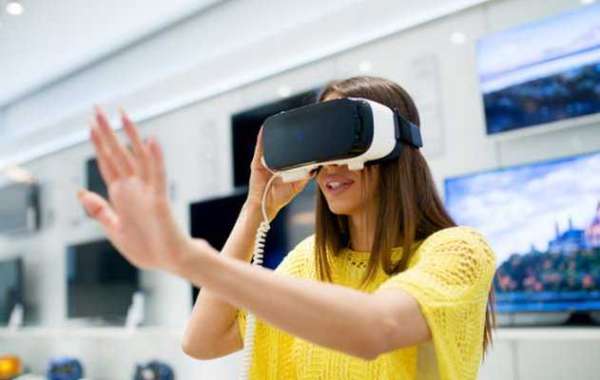The world of online shopping is undergoing a revolutionary transformation, thanks to the integration of Virtual Reality (VR) technology. Virtual Reality, once confined to the realms of gaming and entertainment, has now emerged as a game-changer in the e-commerce industry. With the ability to bridge the gap between physical and digital shopping experiences, VR is redefining how consumers interact with products and make purchasing decisions.
A New Dimension of Shopping
Virtual Reality brings a new dimension to online shopping by immersing users in a digital environment where they can explore products as if they were in a physical store. Imagine being able to try on clothing, test drive a car, or even walk through a virtual furniture showroom – all from the comfort of your home. This level of engagement and interactivity enhances the shopping experience and addresses some of the challenges inherent in traditional online shopping.
Visualizing Products in Real-Life Context
One of the most significant advantages of VR in online shopping is the ability to visualize products in a real-life context. For instance, when considering furniture, VR allows customers to see how a couch fits into their living room, how a lamp complements their bedroom, or how a dining set fits their dining space. This eliminates the guesswork from online shopping and provides a more accurate representation of the products.
Trying Before Buying
Trying on clothing and accessories has always been a concern in online fashion shopping. VR solves this problem by enabling customers to create avatars with accurate measurements and try on virtual outfits. This virtual "fitting room" experience not only enhances confidence in purchasing but also reduces the hassle of returning ill-fitting items.
Virtual Showrooms and Interactive Catalogs
Retailers are leveraging VR to create virtual showrooms and interactive catalogs that simulate the experience of walking through a physical store. Shoppers can browse through shelves, interact with products, and gather detailed information just as they would in a brick-and-mortar store. This approach enhances the sense of exploration and discovery that is often lacking in traditional online shopping.
Enhanced Customer Engagement
VR technology also facilitates enhanced customer engagement. Brands can host live events, product launches, and virtual shopping parties, creating a sense of community and exclusivity. Shoppers can interact with brand representatives, seek advice, and make purchases in a social and interactive environment.
Overcoming Limitations
While the potential of VR in online shopping is immense, challenges such as accessibility, cost of VR devices, and creating compelling VR content remain. However, as technology advances and becomes more affordable, these challenges are gradually being addressed, making VR more accessible to a broader audience.
Conclusion
Virtual Reality is revolutionizing the online shopping experience by adding layers of interactivity, immersion, and personalization. It bridges the gap between physical and digital shopping, providing customers with a more informed, engaging, and enjoyable way to explore and purchase products. As the technology continues to evolve, we can expect VR to play an increasingly pivotal role in reshaping the future of e-commerce, turning every online shopping trip into an exciting adventure.








